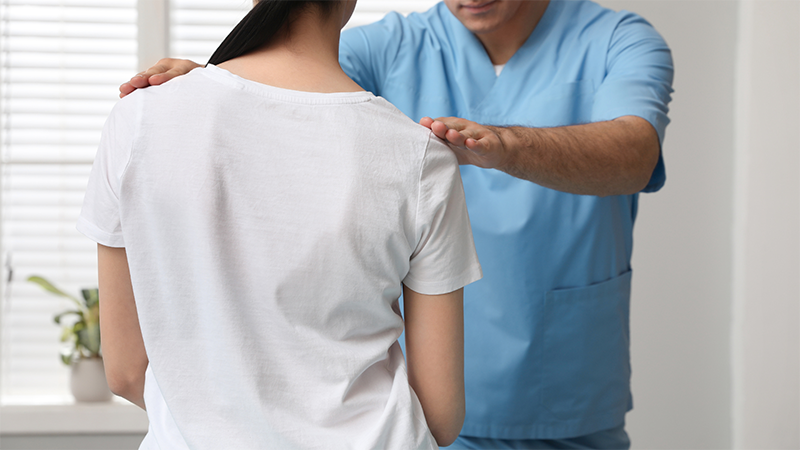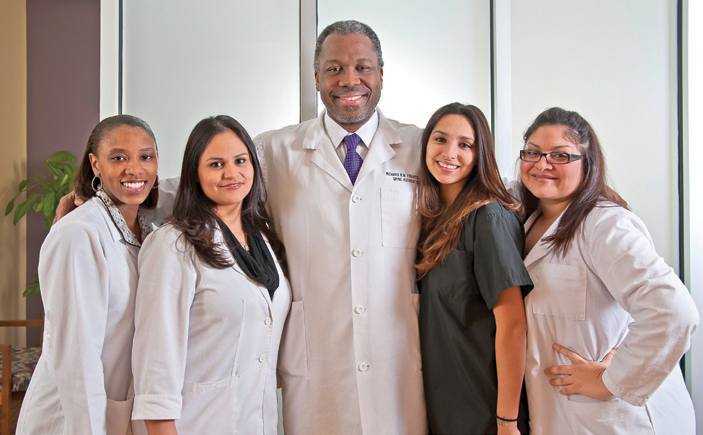Adult Scoliosis Doctors in Beaumont and Houston, TX
Adult Scoliosis and Spine Deformity Specialists in Texas
Living with adult scoliosis can present challenges, but at Spine Associates, we provide comprehensive care tailored to relieve pain, improve mobility, and prevent progression. Our experienced team is here to help you regain control of your spinal health with personalized treatment options.
Diagnosis
Dr. Francis is highly experienced in diagnosing the causes of adult spinal deformities and other spinal disorders as well as providing both surgical and non-surgical care. Full -length standing x-rays are essential in the diagnostic evaluation of adults with spinal deformity. Advanced imaging studies (i.e. MRI or CT myelography) may be needed to assess patients with lower extremity symptoms or other neurologic signs or symptoms.
What Is Adult Scoliosis?
Adult scoliosis involves an abnormal curvature of the spine in individuals over 18. Some cases develop during adolescence and worsen over time, while others are degenerative, caused by age-related spinal wear and tear. Proper evaluation is key to identifying the type and severity of the condition.
What Causes Scoliosis in Adults?
The primary causes of adult scoliosis include unresolved adolescent idiopathic scoliosis and degenerative scoliosis, where spinal discs and joints deteriorate due to aging or arthritis. Other contributors can include spinal trauma, osteoporosis, or previous surgeries that altered spinal structure.

What Are Common Symptoms of Adult Scoliosis?
Symptoms can range from mild discomfort to debilitating pain. Many patients experience uneven posture, back stiffness, numbness or weakness in the legs, and difficulty standing for extended periods. If you notice persistent symptoms, timely intervention can help prevent further complications.
How Is Adult Scoliosis Diagnosed?
Our diagnostic process begins with a physical examination and imaging tests such as X-rays, MRIs, or CT scans. These evaluations measure the degree of spinal curvature and detect any nerve compression or structural damage affecting your overall spinal stability.
What Are the Best Treatment Options for Adult Scoliosis?
Treatment depends on the severity of the curve and its impact on your daily life. Non-surgical options, including physical therapy, bracing, and pain management, are often effective for mild to moderate cases. For severe curvatures or nerve-related symptoms, surgical procedures like spinal fusion or decompression may be recommended. Our team focuses on minimally invasive techniques to reduce recovery time and improve outcomes.
What Are the Potential Complications if Left Untreated?
Scoliosis can lead to worsening back pain, nerve compression, reduced mobility, and even respiratory difficulties in extreme cases without proper care. Early diagnosis and intervention are essential to preserving spinal function and preventing long-term issues.
Why Choose Spine Associates for Adult Scoliosis Treatment?
At Spine Associates, Dr. Richard Francis and our team are dedicated to delivering exceptional care. We take the time to understand your symptoms, goals, and lifestyle needs, offering personalized treatment plans that promote long-term relief and enhanced mobility. With years of experience and access to advanced diagnostic tools, we ensure that every patient receives comprehensive and compassionate care.
“Even after years of practice, I still get excited when I see the change in our patients on the first visit after surgical correction.”

Schedule a Consultation for Personalized Scoliosis Care
If you’re experiencing back pain or changes in posture due to scoliosis, we’re here to help. Contact our Houston or Beaumont office to schedule a consultation. We aim to help you find lasting relief and restore your quality of life with customized, expert care.